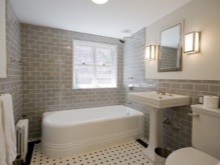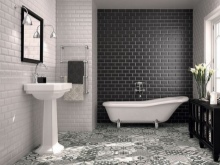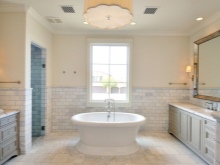Cabana tile in bathroom design
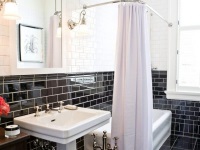
For bathroom finishing, ceramic tiles are mostly used, as they have all the necessary properties for use in rooms with high humidity. In addition, this material is practical, because it is unpretentious in care, and easy to clean, which is extremely important in terms of sanitation. Tile is presented in a wide variety, but against the background of the entire range of advantageous tile kabanchik. Thanks to the original design, most consumers give preference to it.
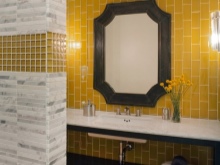
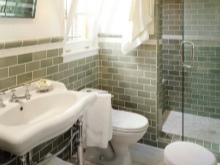
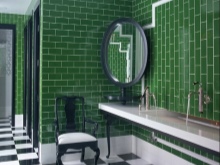
What is it and why is it called so?
Kabanchik - volumetric ceramic tiles of rectangular shape, which has a chamfer and looks like a brick. Material of this type appeared in the early 20th century, and was originally intended for facade work. Its original name the tile has received because of the peculiarities of its production - when pouring raw materials into the molds, the products formed two technological holes, which gave them a resemblance to a pig snout. After firing the ceramics, the dummy was broken into two parts, thus obtaining two identical tiles with a convex surface.

Tiles have many variations, both in form and design, but its main distinguishing features are beveled edges at an angle of 45°, convex shape and monochrome color. It should be noted that this type of tile also occurs without chamfering, ie, beveled edges.
Finishing material has a number of advantages, which explains its demand in the market:
- high strength and hardness;
- durability;
- resistance to temperature fluctuations, high humidity and chemicals;
- easy care, because thanks to the dense texture dirt does not penetrate into the surface of the products.
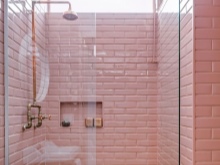
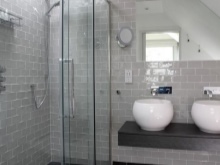
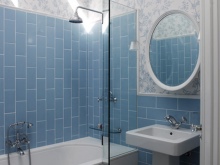
Another important advantage of finishing tiles kabanchik is that it can be laid on uneven surfaces, so repairs are much faster and easier.
Popular colors
The color gamut of kabanchik tiles is dazzling in abundance, so every consumer will find the perfect solution for their bathroom.
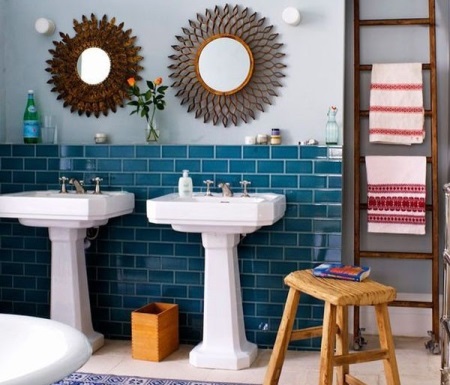
The most popular today are the following colors:
- White - universal tile, which is suitable for both small and large rooms. It goes well with brightly colored tiles, such as red, yellow, turquoise, and neutral black, gray or beige.
- Black - is the original solution for spacious bathrooms, but it should be used in combination with light materials, namely white and gray. Quite often in narrow rooms, black glossy tiles finish only one wall, thus changing its geometry.
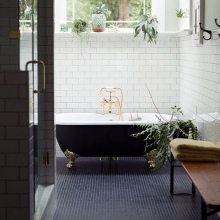
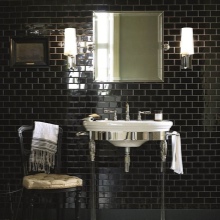
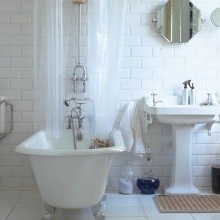
- Blue - is a traditional choice for bathrooms, because this color is associated with freshness and lightness. Combine in the interior blue tiles can be turquoise, white, gray and blue.
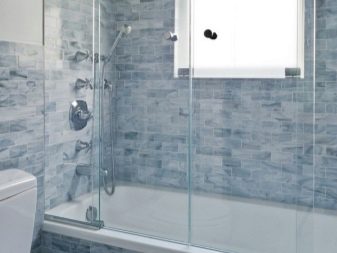
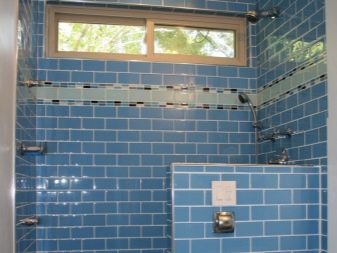
- Red - A bright, aggressive color, so it should not be the main, but complementary. It is recommended to combine red tiles with white, or ivory.
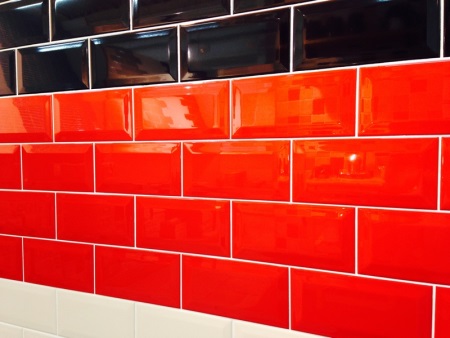
- Yellow - sunny tiles will look good in the bathroom, but you should choose not saturated, but muted shades. As an additional color you can choose white, brown or not a bright green.
- Green - lush, cheerful color, but in the bathrooms it should be used carefully. Tiles of bright colors can be lined with small areas, but if you plan to use green as a primary color, it should be muted and light, such as pastel, pistachio or cane. You can complement the green tiles with white, yellow, black, orange.
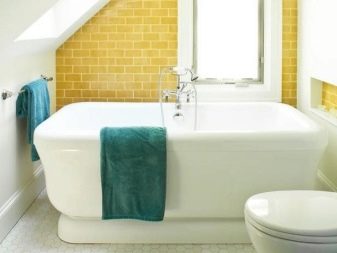
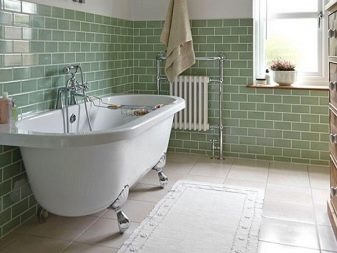
Dimensions
Tiles kabanchik available in a variety of sizes, from small 7.5x10 cm to large 28.5x8.5 cm. In accordance with GOST, the standard length of the tile must vary between 12-25 cm, and the width of 6.5-10 cm. But, nevertheless, for tiling bathrooms most often use non-standard size products 10x20 and 10x30 cm. Regarding the thickness of the tiles, the standard should be 0.8 cm, but it should be taken into account that this value often concerns the edges of the product, while the main part of it will be more convex, and can reach 2 cm.
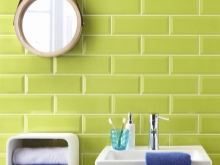
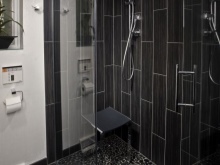
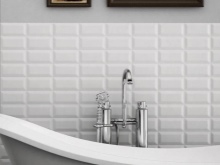
For small-sized bathrooms, it is recommended to choose a tile of small size, because a large tile is able to visually reduce the space. But when facing spacious rooms, you can use tile of any size, moreover, in this case it is allowed to use decorative elements.
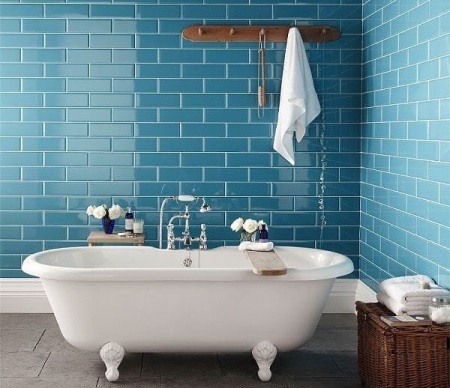
Textures and design
Finishing tiles kabanchik has a diverse range, which includes products of different design and texture. Most often the material has beveled edges, i.e. chamfered, due to which it looks more voluminous. Chamfer tops may be sharp pointed or smooth rounded. The choice will depend on the interior design and personal preferences of the consumer.
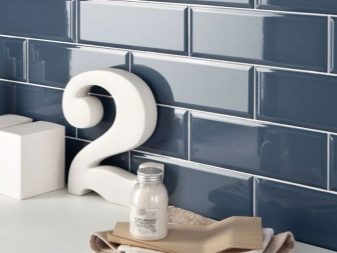

As a rule, the booth has a monochrome color, but there are also more interesting models, for example, imitating marble, wood and natural brick. To create an original bathroom interior design, you should pay attention to glass tiles. It will not only make a highlight of the room, and visually expand the space, but it should be noted that the use of such material should be moderate, you should not cover all or most of the wall.
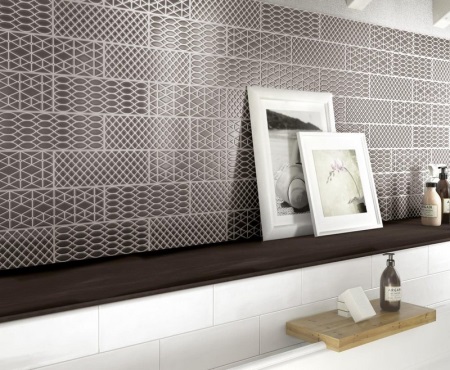
The texture of ceramic tiles can be matte and glossy, but still the second version enjoys the greatest demand. Due to the reflective, glossy surface, the bathroom will look much more spacious and bright, which is especially important for small rooms. Matte products also look quite attractive in the interior of the bathroom, especially in the loft style, but still more often they are purchased for spacious rooms.
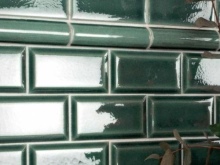
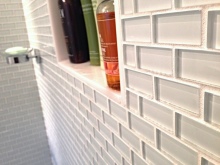
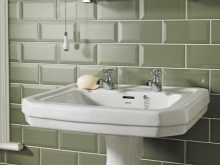
Types and technologies of laying
Thanks to its rectangular shape, tiles can be laid in different ways, thereby changing the visual perception of the room, expanding the space or increasing the height of the ceiling.

There are 7 main tile laying technologies, which can be used not only separately, but also combined with each other.
- Traditional. Assumes tiling the wall on the type of masonry, ie, ceramic elements are placed with an offset of half of the tiles placed in the previous row. This method is the easiest, so it is used more often than others.
- Stacked horizontal. The stacker is placed horizontally, joint to joint. At first glance, this option of laying looks easy, but in fact only an experienced master can qualitatively perform the work. The main difficulty of the task lies in the seams - they should be as even and accurate as possible.
- Vertical with an offset. Tile placement technology resembles the traditional method, but it is necessary to strictly adhere to vertical lines. This laying scheme is not recommended for small bathrooms.
- Stacked vertical. The type of laying is also complicated by the need to adhere to strict lines, and perform even joints. Good for spacious rooms with low ceilings.
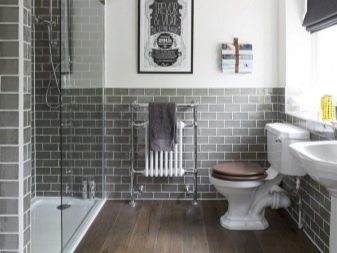
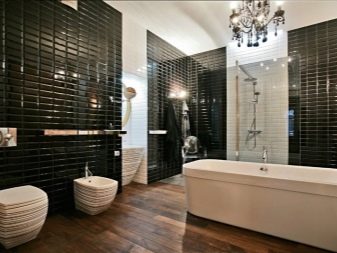
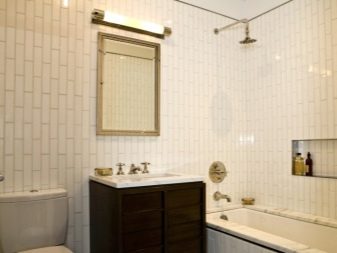
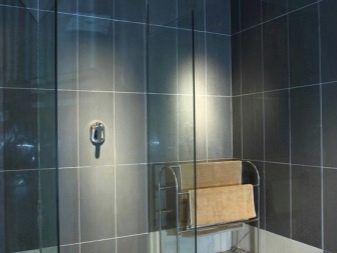
- Checkerboard order. The tiles are placed in 2 pieces, alternating its position - first horizontally, then vertically, etc. Such a scheme looks quite interesting, and is well suited for finishing not only the walls, but also the floor.
- Diagonal. To perform such laying of ceramics will be difficult, but the result is worth it. This method of wall cladding will be an excellent solution for small bathrooms. For the best visual effect of increasing the space, light materials with a glossy surface should be used.
- "Herringbone. The caban layout is reminiscent of the classic parquet laying scheme. It looks very effective tiled surface, but the implementation of the task is complicated by the need to cut the tiles at an angle of 45 °.
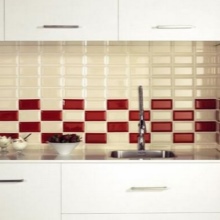
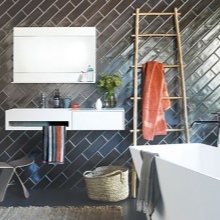
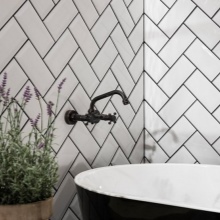
Before tiling the walls with tiles is recommended to draw a marking in accordance with the scheme of laying. Alternatively, you can use a stretched string or a laser level. Such methods are especially good in cases of laying tiles diagonally or "herringbone", as they allow you to clearly adhere to the desired direction.
Another important point when laying a booth is the thickness of the joints. Many sellers recommend leaving a gap of 5 mm, but it should be taken into account that not every interior will look so wide gaps aesthetically. According to designers, seams of 2-3 mm will be optimal.
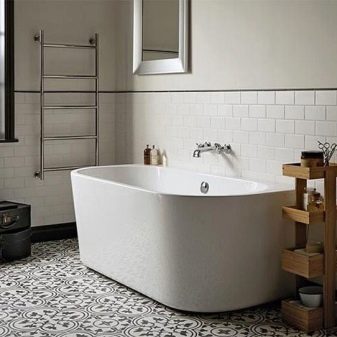
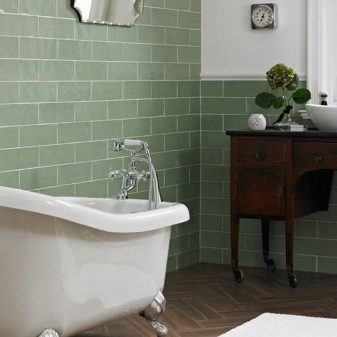
Examples in the interior of the bathroom and toilet
Ceramic tile booth will be a good addition to almost any bathroom interior, but it looks best in the following styles:
1. art deco. The design assumes orderliness, severity of lines and geometricity, so the imitation of brickwork is one of the most commonly used elements. Usually use tiles in black and white, but sometimes the room is finished in gray tones. In the interior of art deco often combine two types of finishing, for example, a tile booth and stucco.
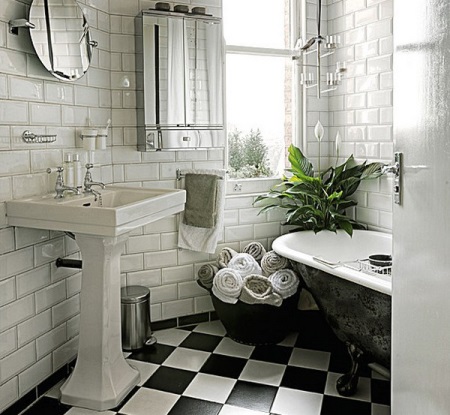
2. Loft. This style has an urban and, in a sense, industrial character. Almost always in the interior is present brickwork, for the creation of which materials with a brushed surface are used. Often the light tile cabanchik combine with a large dark tile, and also use grout of contrasting color to create a somewhat rough look.
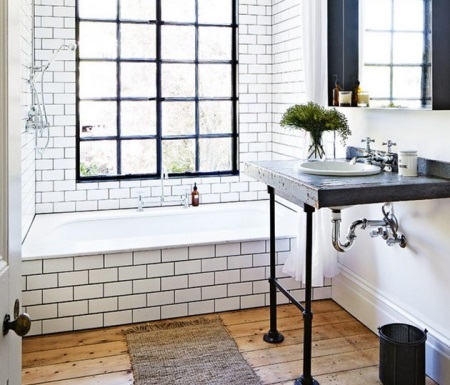
3. Scandinavian style. The interior has common features with the industrial and loft styles. It is characterized by tandems of rough and smooth textures. Tile boar perfectly fits into the Scandinavian style, because it can be used to create a semblance of a brick wall.
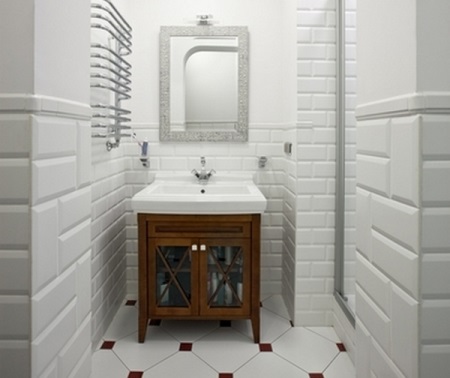
4. Classic. In the design of classic style bathrooms, tiles imitating wood or marble are often used. Similar models are present and in the range of tiles kabanchik. No less aesthetic will look in the interior elegant white facing material with soft features and glossy surface.
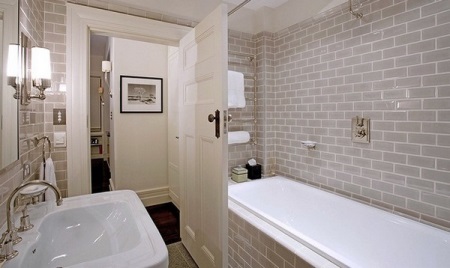
There are a lot of different options for the use of tiles boar in the interior of the bathroom. A wide range of ceramic products allows you to translate into reality virtually any design ideas.
